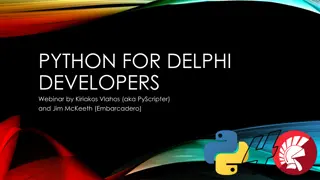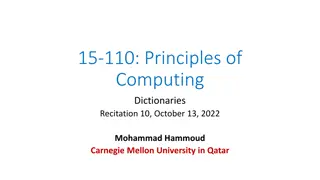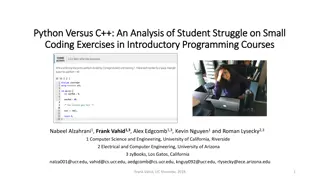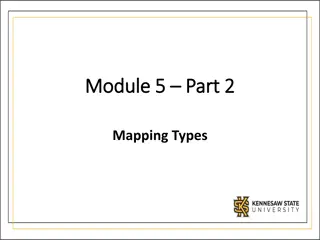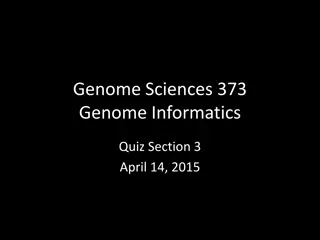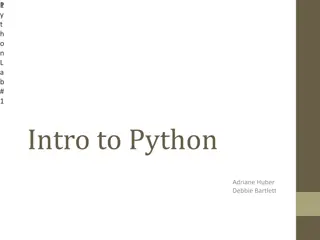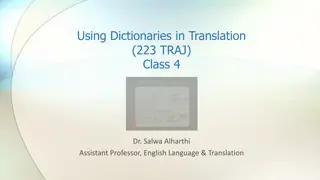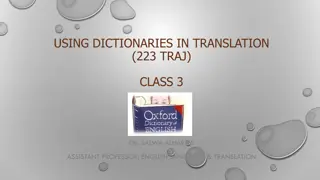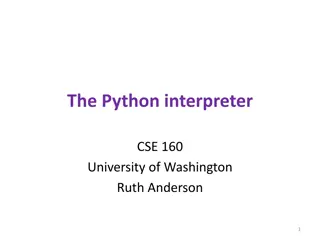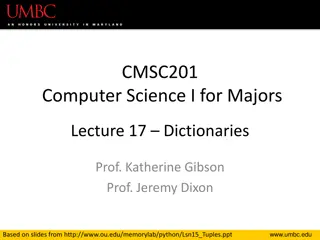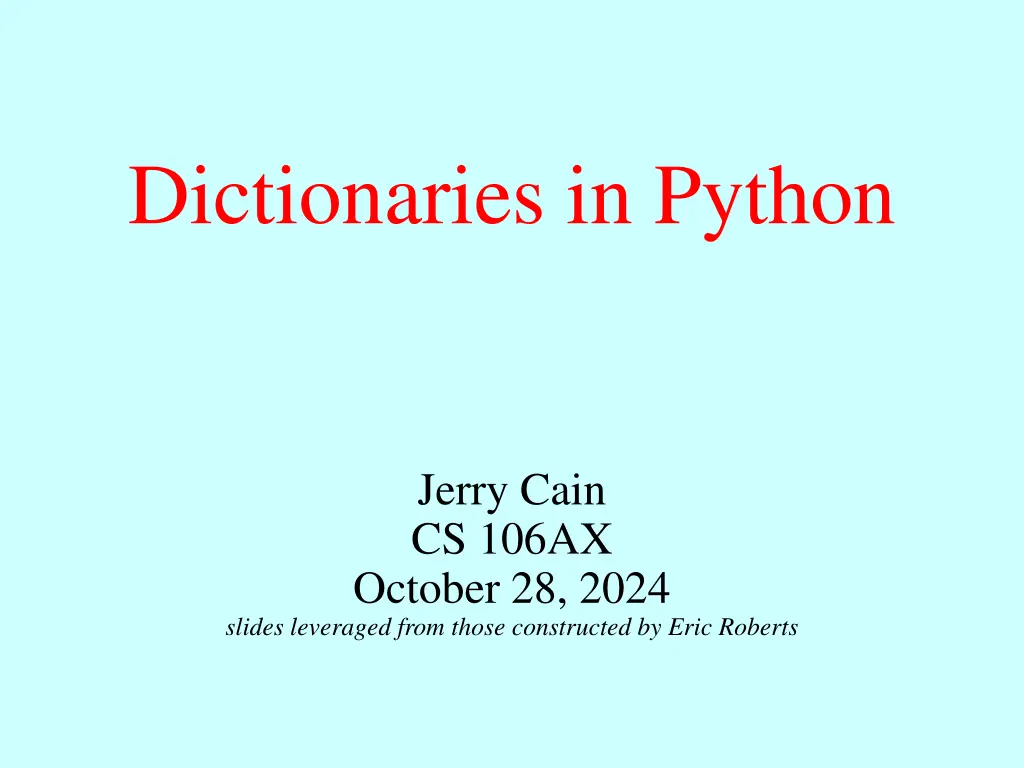
Understanding Dictionaries in Python for Effective Programming
Explore the concept of dictionaries in Python and how they allow for pairing data values efficiently. Learn how to utilize dictionaries, iterate through keys, and apply them in real-world applications like mapping airport codes. Get ready to enhance your programming skills with this essential Python data structure.
Download Presentation

Please find below an Image/Link to download the presentation.
The content on the website is provided AS IS for your information and personal use only. It may not be sold, licensed, or shared on other websites without obtaining consent from the author. If you encounter any issues during the download, it is possible that the publisher has removed the file from their server.
You are allowed to download the files provided on this website for personal or commercial use, subject to the condition that they are used lawfully. All files are the property of their respective owners.
The content on the website is provided AS IS for your information and personal use only. It may not be sold, licensed, or shared on other websites without obtaining consent from the author.
E N D
Presentation Transcript
Dictionaries in Python Jerry Cain CS 106AX October 28, 2024 slides leveraged from those constructed by Eric Roberts
Dictionaries in Python Like most modern programming languages, Python provides a data structure allowing us to associate pairs of data values. Although the more common term in computer science is map, Python calls this structure a dictionary. A dictionary associates a simple data value called a key (most often a string)withavalue,whichisoften largerandmore complex. Applications of the map idea exist everywhere in the real world. A classic example which is where Python gets the name is a dictionary. The keys are the words, and the values are the corresponding definitions. You ll be relying on strings, lists, and dictionaries for Assignment 5, which goes out on Wednesday.
Dictionaries in Python Dictionaries in Python are similar in syntax to lists. In both data models, the fundamental operation is selection, which is indicated using square brackets. The difference is that index values for a dictionary need not be integers. When you look up a value in a dictionary, you supply the key as a string expression using the square-bracket notation, as in map[key] If the key is defined in the dictionary, this selection returns the value. If no definition has been supplied, Python raises a KeyError exception. Dictionary selections are assignable. You can set the value associated with a key by executing an assignment statement: map[key] = value
Using Dictionaries in an Application Before going on to look at other applications, it seems worth going through the example from the text, which uses a dictionary to map three-letter airport codes to their locations. The association list is stored in a text file that looks like this: ATL: Atlanta, GA, USA PEK: Beijing, China DXB: Dubai, United Arab Emirates LAX: Los Angeles, CA, USA HND: Tokyo, Japan ORD: Chicago, IL, USA LHR: London, England, United Kingdom HKG: Hong Kong, Hong Kong ... The dictfile.py module shows how to read this type of data file into a Python object.
Iterating Through Keys in an Object One of the common operations that clients need to perform when using a dictionary is to iterate through the keys. Python supports this operation using the for statement, which has the following form: for key in dict: value = dict[key] . . . code to work with the individual key and value . . . You can also use the items method to iterate through the keys and values together: for key, value in dict.items(): . . . code to work with the individual key and value . . .
Symbol Tables Programming languages make use of dictionaries in several contexts, of which one of the easiest to recognize is a symbol table, which keeps track of the correspondence between variable names and their values. The SymbolTable.py application in the text implements a simple test of a symbol table that reads lines from the console, each of which is one of the following commands: A simple assignment statement of the form var = number. A variable alone on a line, which displays the variable s value. Before running the program, we re going to add two new features: The command list, which lists all the variables. The command quit, which exits from the program.
Sample Run of SymbolTable.py SymbolTable > pi = 3.14159 > e = 2.71828 > x = 2 > pi 3.14159 > x 2 > list e = 2.71828 pi = 3.14159 x = 2 > x = 42 > a = 1.5 > list a = 1.5 e = 2.71828 pi = 3.14159 x = 42 > quit



